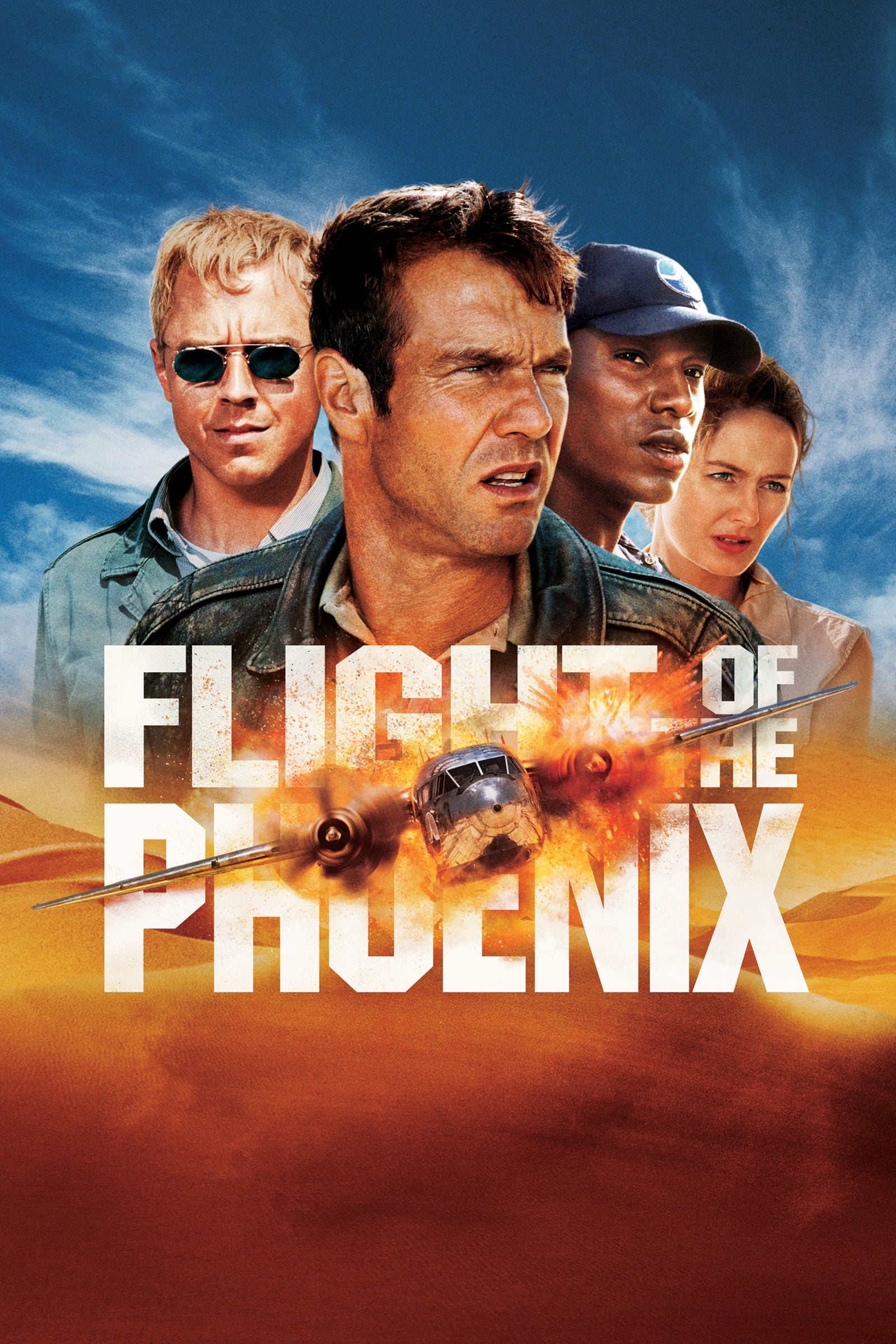
When an oil rig in the Gobi Desert of Mongolia proves unproductive, an aircraft crew are sent to shut the operation down and fly them out. On the flight out over the desert on the way to Beijing, Capt. Frank Towns and co-pilot A.J. are unable to keep their cargo plane, a C-119 Flying Boxcar, in the air when a violent sandstorm strikes. Crash-landing in a remote uncharted part of the desert, the two pilots and their passengers -- a crew of oil workers and a drifter -- must work together to survive by rebuilding the aircraft. Soon, low supplies and a band of merciless smugglers add even greater urgency to their task.
28 Nov Flight of the Phoenix (2004)
Flying Eye
This movie was great fun and all the fun was in the eye.
If you know the original, it justified itself as a character development project: people thrust into an isolated, life and death situation — various challenges to overcome, various group dynamics to confront. It was about what used to called drama.
This film has almost exactly the same plot; the deviations are minor. But it justifies itself in a wholly different way. The situation is merely an excuse, the characters merely tokens for the greater focus: and that focus is all about the real star here: the camera. Yes, it has cliffhangers and threats, but they are merely the rhythm section.
Everything about this is conceived as a visual, usually a new visual, a new take on a hackneyed visual (the plane over the sun, the dancing shadow on the dunes), or a more energetic editing of events (like the rushing of the wounded bandit back to camp).
No film can overcome a bad opening shot, and this understands that we need to immediately map story to image. So we have an abstract narrative in a Johnny Cash song over the flight of our ugly plane. This shows masterful planning because from that moment we know what we see is what matters, not what we hear — and certainly not the sense of the story.
That’s followed by the best editing I know of a terminal event, the plane crash. It is not lyrical like Weir’s crash in “Fearless,” and it is not as frantic as a real crash. It is in between: confused and frantic enough to grab us because it we really have to work to know where we are.
So already before the story begins, the storyteller has transformed us twice into watchers registered into the visual grammar only. You need to see this film just to appreciate how effective this is as a storytelling device.
Then we demand some story and are given some: plight, rebellion, bandits, hope. But watch. Each chapter has two layers: the layer of the story (what you would get in the 65 version) and the layer of the camera (and editing) artist. The latter is what makes this worth seeing, just as the banal content of “Van Helsing” had little to do with the experience.
But the casting is apt, at least with the two main characters (I discount Quaid’s character, because he’s just a prop). Ribisi is one of our most talented young actors. He’s not quite at the level of Seymour Hoffman in terms of subliminal folding (where you do your character and also give us a message directly from the actor), but he has been terrific in ensemble folded acting. For instance, in the otherwise dreadful “The Giift” or best folded actress, Cate Blanchett and he did some fairly remarkable combined work.
Here, he plays a similar role and has a similar partner. Miranda isn’t quite in the same league as Cate, but she does know the game, is Australian and redheaded. Now I’ve got to go back and see her other work.
You must see this on a big screen. It will be just an ordinary story on a DVD, reduced to a mere Dreamworks plot.
Posted in 2004
Ted’s Evaluation — 3 of 3: Worth watching.


No Comments